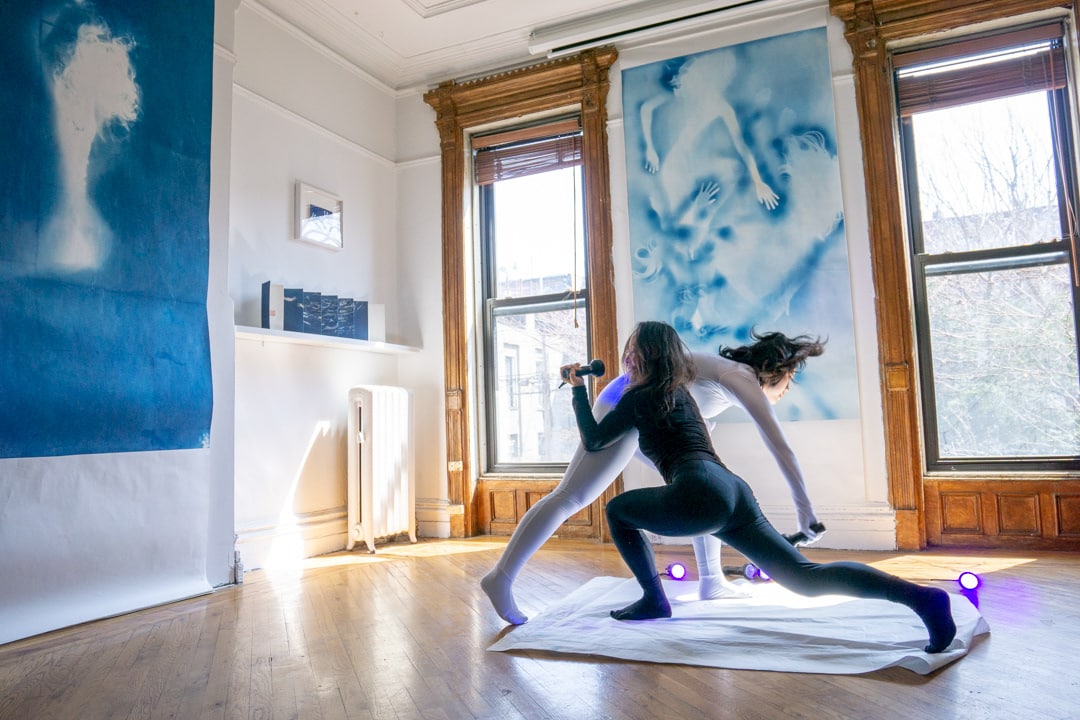
An innovative new show boldly taps the many meanings of the world’s most popular color: Blue. Bringing together masterworks of art by Pablo Picasso, Francoise Gilot, Henri Matisse, Joan Miro, Yves Klein, Arman, Paul Klee (a painting once owned by Ernest Hemingway), Odilon Redon, Wayne Thiebaud, Richard Diebenkorn, Helen Frankenthaler and many others, including several of the most important artists of our time, this rhapsody in blue pursues its theme through a wide range of media, from sculpture, paintings and watercolors through photographs, cyanotypes, ceramics (including Moroccan tiles, Chinese Ming vases, Turkish vessels and Japanese claire de lune porcelain), textiles and even a United Nations helmet. An important theme of the exhibition is the global and historical span of blue’s cultural meanings, from ancient Egypt and China to medieval Europe. Highly valued source materials, such as lapis lazuli and cobalt, have been vital trade commodities that passed along the Silk Road in both directions (a suite of monochrome prints by Hokusai responds to the introduction of Prussian blue to Japan in 1831). One of the many highlights of the show is a huge triptych by Cao Jun, one of China’s most important artists, created for this show. It joins works by by Mark Innerst, Jeffrey Gibson, Antonio Santin, Deborah Turbeville, Jeffrey Gibson and many other contemporary artists. The religious and political meanings of blue in heraldry, flags and posters is traced from one region and era to the next.
What color means more to us than blue? Even among the primaries, it commands a privileged place, by far the most popular hue in the spectrum according to surveys on every continent. Blue casts its spell, pushing beyond symbolism to a deeper emotional level, drawing us into its pure and distant mysteries. Every artist goes through a “blue period,” from Picasso’s tragic mode to the sunny Mediterranean blues of Matisse and Yves Klein and the haunting aura of Redon. Blue has been holy to Egyptian, Hindu, Chinese and Western sources. Its physical sources (cobalt, ultramarine, cerulean, indigo, lapis lazuli, cyan) are a catalogue of valued materials that rival gold itself. As this exhibition exuberantly proves, the power of blue transcends art history. Poets, filmmakers, musicians and designers have tapped its resonant appeal. Pantone made “Classic Blue” the color of 2020. The most original music in America (home of bluejeans, “democracy in fashion” and a symbol of the Berlin Wall protests) is the blues, captured in a collage by Romare Bearden and a suite of photographs by Roy De Carava. We are turning the entire museum over to the multi-media exploration of blue in many incarnations. It spans history and geography, from the precious lapis lazuli of antiquity to paintings, photographs, sculpture, ceramics, cyanotypes, and fashion. As Miro said, “This is the color of my dreams.”
Programming for the show includes a specially commissioned ballet by the artist Han Qin, a blues concert, a forum convening leading minds on the meaning of blue in Christianity, Islam, Buddhism, Hinduism and other religions, artists in the galleries, literary reading, lectures and a director’s seminar series held in his private office.
Nassau County Museum of Art is located at One Museum Drive in Roslyn Harbor. The museum is open Tuesday-Sunday, 11 a.m.-4:45 p.m. Admission is $15 for adults, $10 for seniors (62 and above) and $5 for students and children (4 to12). Docent-led tours of the exhibition are offered at 2 p.m. each day; tours of the mansion are offered each Saturday at 1 p.m.
—Submitted by Nassau County Museum of Art


















